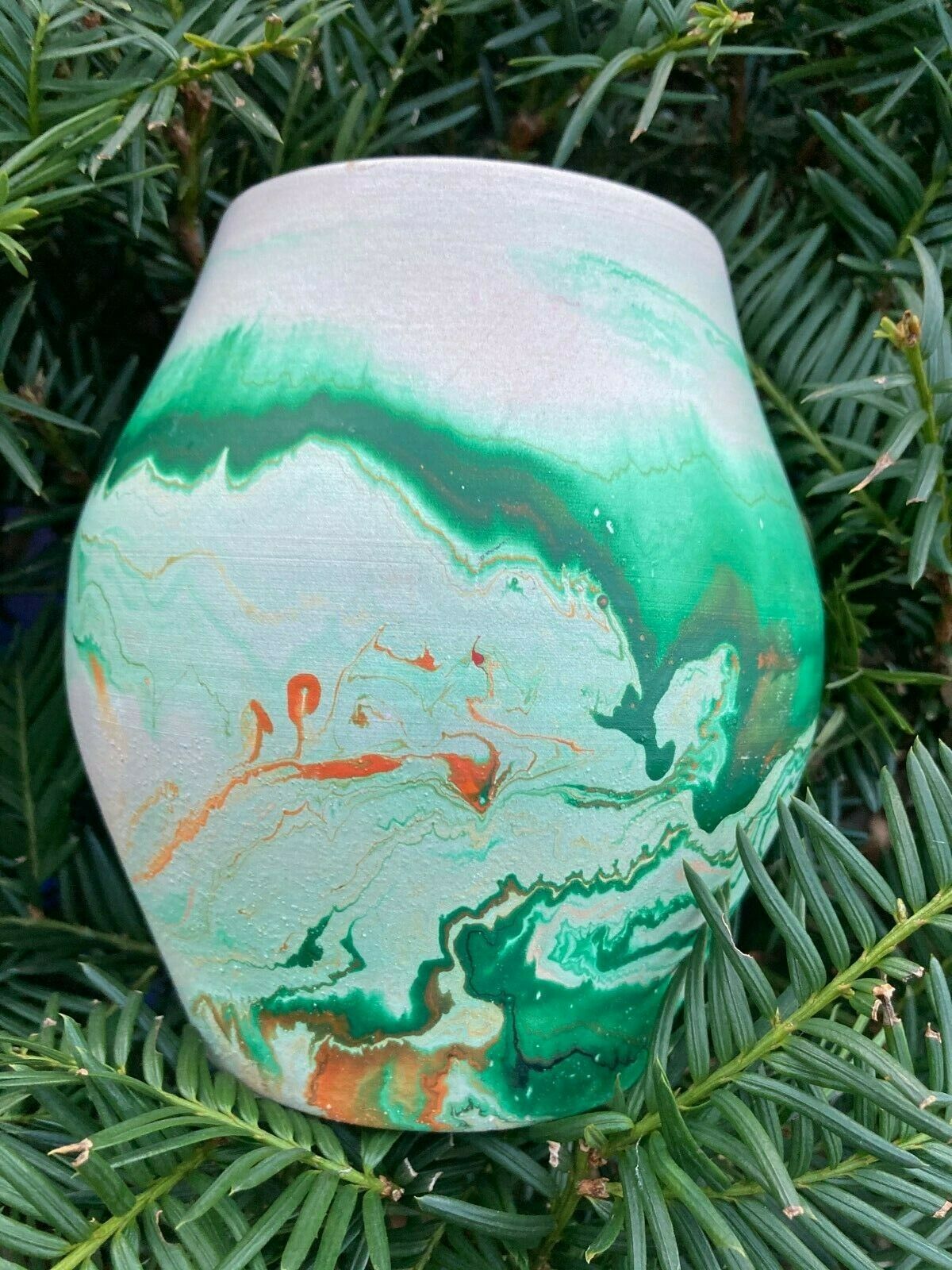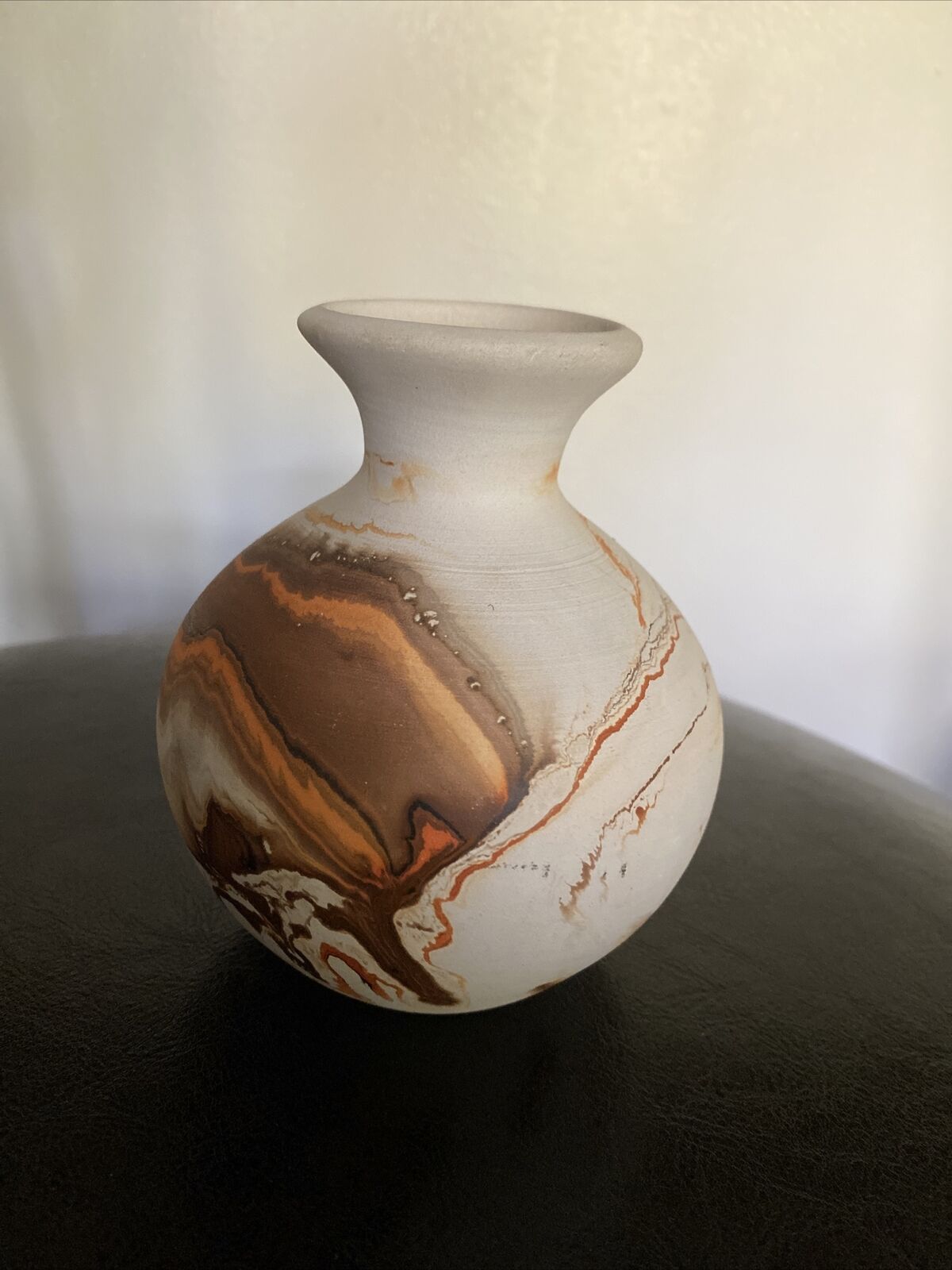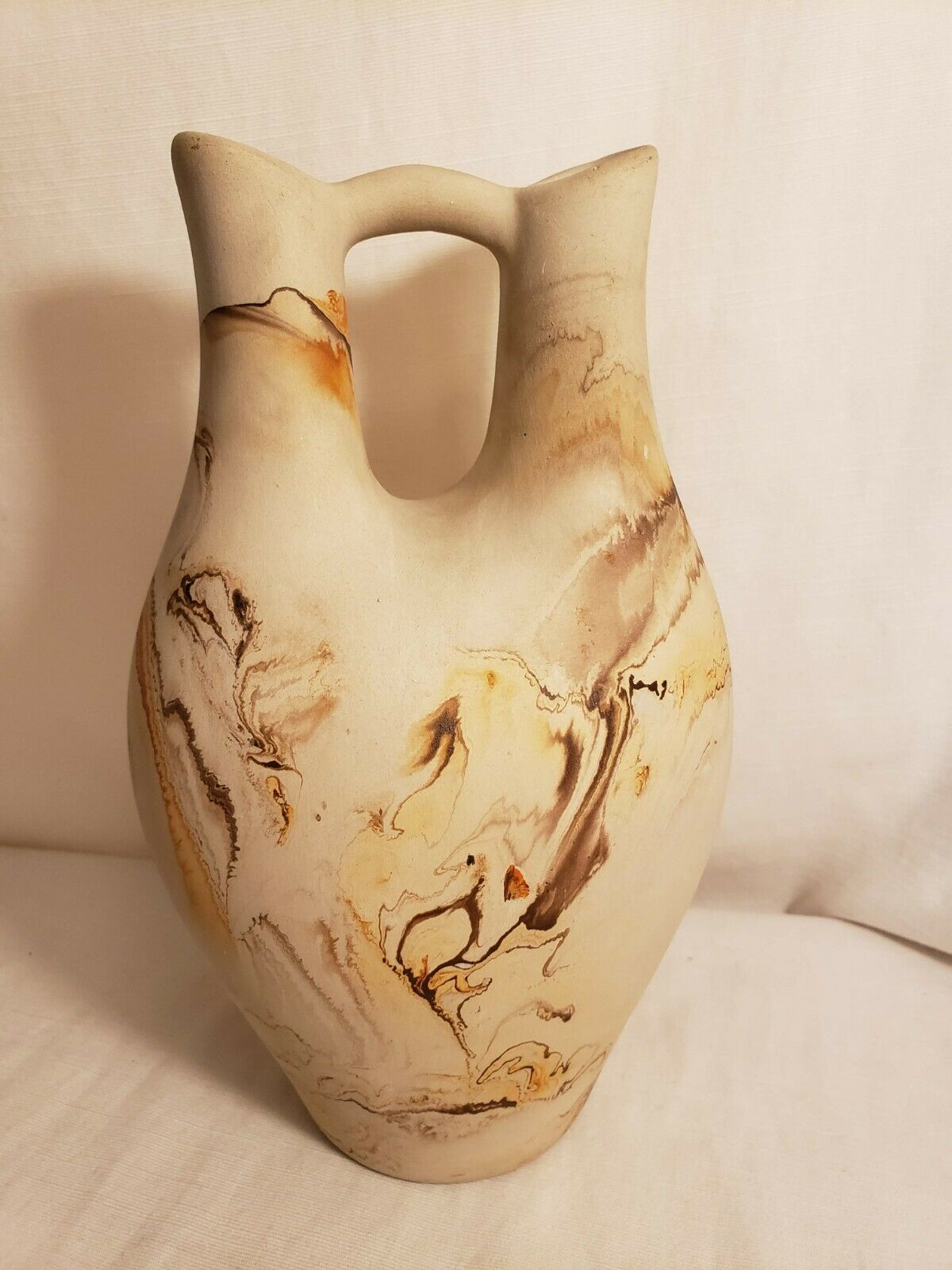-40%
Nemadji Pottery Southwestern Style Wedding Type vase with MCM Style Paint signed
$ 21.11
- Description
- Size Guide
Description
This listing is for a 10.25 inch tall Double spout "Wedding" Style vase. It measures 10.25 inches tall by 6 inches wide by 5 inches in depth. The size, shape and design of the pottery of the vase are influenced by the SouthWest Pueblo Style Pottery of the tribes found in that region. the paint however is anything but. Produced in Minnesota, this unique brand of pottery was sold throughout the western United States to unknowing tourists as purporting to be "produced by Native American artisans" as tourist ware.Companies like Nemadji were the reason why the Federal LAW "The Indian Arts and Crafts Act (Act) of 1990" was legislated! The Label stamped on the Bottom of this piece is indeed the Nemadji Brand and is indeed misleading in its appearance and its connotation that there were Native Americans involved in the production of it's wares. This piece is therefore "vintage American chicanery ware" as its sole purpose was to sell to tourists interested in authentic souvenirs of the southwest's original peoples when it was in fact produced in a former brick foundry in Minnesota. With a fitting end Nemadji Pottery forever closed its doors in 2002, only 12 years after the passing of the statute that "covers all Indian and Indian-style traditional and contemporary arts and crafts produced after 1934."
The Act broadly applies to the marketing of arts and crafts by any person in the United States. Some traditional items frequently copied by non-Indians include Indian-style jewelry, pottery, baskets, carved stone fetishes, woven rugs, kachina dolls, and clothing. All products must be marketed truthfully regarding the tribal enrollment of the producers so as not to mislead the consumer. It is illegal to market art or craftwork using the name of a tribe if a member, or certified Indian artisan, of that tribe did not actually create the art or craftwork. For example, products sold using a sign claiming "Indian Jewelry" would be a violation of the Indian Arts and Crafts Act if the jewelry was produced by someone other than a member, or certified Indian artisan, of an Indian tribe. Products advertised as "Navajo Jewelry" would be in violation of the Act if they were produced by someone who is not a member, or certified Indian artisan, of the Navajo tribe." *From the Department of the Interior Indian Arts and Crafts Board.
As for Nemadji Pottery.... Whats in a name? When it comes to Nemadji Pottery, the answer is plenty. Its 1940, and youre a tourist Out West. Maybe youve been visiting the Badlands and are now looking for the perfect souvenir. You spy an array of pottery bowls and vases in the Southwest style. The shapes are simple, accented by an eye-catching mix of multi-colored swirls against an earth-tone base. You pick up a pot and flip it over. The stamp reads Nemadji Indian PotteryNative Clay. Hows that for authenticity? Well, while Nemadji is certainly in the Southwestern style, northeastern Minnesota is where it actually hails from. But if the marking on that pot read, made in Moose Lake, would you have snapped it up? Probably not. Nemadji occupies a unique place in the history of American pottery. From the companys earliest days, its Up North underpinnings were underplayed. A Nemadji catalog from the 1960s notes that the pottery was made largely from designs of ancient Indian pottery, and many of their traditional shapes are preserved in our designs. As late as 1982, Better Homes & Gardens praised Nemadjis rich earthen hues . . .made by the American Indians, and many eBay listings still tout Nemadji as the perfect addition to a Native American collection. So what exactly is Nemadji? The story begins with ceramist Frank Johnson. In 1920, Johnson founded the Northern Clay Products Corporation in Nemadji Township, just northeast of Moose Lake, Minnesota. The location, conveniently situated on a large bed of native clay, was ideal for Johnsons purposes. Specializing in industrial brick, as well as some decorative hand-thrown pottery, Northern Clay was a success. But more capital was needed. For that, Johnson called on prominent Moose Lake attorney and lumberman Clayton J. Dodge. Dodge was happy to oblige. The newly-renamed Nemadji Tile and Pottery Company soon won nationwide acclaim for its decorative tile, used primarily for flooring. Hand-thrown Nemadji pottery was also popular, and there the difficulty set in. Dodge saw decorative pottery as a sure thing for the countrys burgeoning tourist trade. Johnson, however, had no interest in mass-produced ware, and the partnership ended. His 1929 replacement proved largely responsible for the Nemadji designs todays collectors covet. Danish immigrant Eric Hellman created the original thrown pottery needed to fashion molds for mass production. Hellman also modernized the Nemadji kilns, trained the companys workers, and introduced the cold striped painting process which gave Nemadji pottery its multi-colored swirls. (Essentially, cold striping involved dripping different colors of synthetic enamels into a tub of water. Each pottery piece was then dipped in the tub, until the colors adhered. A twist before removal resulted in the signature Nemadji swirls.) Hellman remained at Nemadji only until 1931, leaving for Colorado and the establishment of his own studio near the Garden of the Gods. Hellmans influence on the Nemadji output, however, was massive. Through changes of ownership and the addition of new product lines, right up until the companys closing in 2002, Hellmans original designs and techniques remained Nemadjis bread and butter. Now, for that Native American connection. Although the Moose Lake, Minnesota, area was once home to the Ojibwe, by the time of the towns founding in 1870, most of the original inhabitants had long since been moved to reservations. The most notable trace of their previous presence was the name Nemadji. This Ojibwe word, translated as left hand, was simply a directional term for the regions first river on the left emptying into Lake Superior. Despite the legends and wishful thinking, there was no Nemadji tribe behind Nemadji Pottery. Instead, in an era before cultural appropriation was recognized, enterprising ceramists created their own interpretations of Southwest style pottery. While definitely not what original buyers presumed it to be, Nemadji Pottery has since found its own niche as a lovely, affordable (most pieces sell for well under ), and sought-after example of mid-century Midwestern entrepreneurship. This vase shows little wear for being produced before 2002 and it is collectible for its unique place in history. Unique in its artistic elements although its misplaced intentions were less than admirable, this company serves as a milepost in the effort to capitalize on the Native American Culture and its subsequent demise marks the beginning of the end of cultural and economic inequality with regard to the native population of this land called "America". Please see all photos as they are part of the item's description and thank you for looking at and reading this listing!




















